Apparently there had been a major Max Beckmann show at the Neue Galerie in New York since the fall, and it ends tomorrow (1/15). I hadn’t heard anything about it. Luckily some very random person emailed me, as they remembered my affinity for Beckman somehow. So I went and here are some thoughts.
Max Beckmann was a German artist who achieved a lot of success in the Weimar Republic era—the time between the First and Second World Wars, especially the 1920s. The art in that era is very interesting because it’s this brief period of humanity trying to restart civilization, with the memory of the depths of hell still fresh in their minds. And it’s especially ghastly because we today know what came after—a World War even worse than the first one.
It’s easy to look at the Weimar Republic as a decadent time when culture declined, where moral courage was so emptied out that the Nazis were able to rise up and take power. But Beckmann’s depictions of the Weimar Republic do not just ridicule that time and place—he finds the humanity there. But finding the humanity in a rotten time does not necessarily mean producing something sentimental, empathetic, or fuzzy in any way. Beckmann finds the humanity in an inhuman time—which is precisely what makes his work so terrifying. He isn’t trying to turn them into relatable good people—he’s showing how ghoulishness can become so normal, how a whole society can become a living death, how humanity can accommodate inhumanity so easily. Finding some humanity even in the grotesqueness that was swelling doesn’t mean humanizing grotesqueness, it means grotesquefying humanity. And that’s what you see in Beckmann’s paintings—pinched distorted faces. Hardly any smiles. (And when people in his paintings do smile, that makes them look even worse somehow).
The grotesqueness of the time in part comes from the First World War that was only a few years in the past, and society’s attempt to try to move beyond it without dealing with it, trying to have some kind of normality after the depths of hell had been unleashed. It’s absurd and grotesque, because they’re carrying that evil and that hell of the war forward—you can see it in their faces. Like everything was permanently poisoned and couldn’t help but manifest itself in everyone’s faces forever. This was especially evident in the faces of the bourgeoisie, who Beckmann depicted in all of their subtle inhumanity. The only one who looks as if he has any trace of human warmth is the guy on the bottom left who kind of looks like Jeff Bezos—and if he is the most human-looking person, you know you’re in trouble.
Beckmann had some empathy for the people who are emaciated and impoverished and miserable, trying to go through their lives. They are depicted more as living corpses than as sinister demons—the demons are the socialites, bankers, anyone who is a mover and shaker in such an evil time and place. They are painted with sharp angular faces and devilish grins—the kind of people who thrive in a time of moral rot inbetween spasms of unprecedented mass death. But the mass of humanity, who simply get used as meat by the demons at the top, they are portrayed with some softness—but still not really with humanity, because they are being dehumanized themselves. They aren’t actively contributing to dehumanization, but they are the victims of it—and that isn’t a pretty thing.
He did a lot of self portraits, it’s kind of what Beckmann is known for, and those are a mix between the hard evil faces of the bourgeosie in his paintings, and a kind of comical detachment. He doesn’t spare himself. He knows he’s part of the problem too.
There’s also something very contemporary in his self portraits, in how he is sort of trying on all these different identities. Like he’s playing at being some kind of sailor man in one of them. But you can see in his face that he doesn’t buy into any of it. Like he could anticipate today, when everyone is just trying on different identities and photographing them doing it and sharing it digitally. It’s like he foretold selfie culture but fully despised it and saw its inhumanity.
He also has lots of pictures of carnivals and circuses—another thing he’s known for. They are very colorful, very chaotic, with body parts kind of flying everywhere, one body meshes into the next, breasts are exposed haphazardly. But there’s no sense of joy or fun to it. I think that’s the point. Some of the faces are so pallid, and with their blank eyes they basically look like zombies. A dead culture going through the motions of celebration and excess, but it led to nothing. Beckmann seems to understand that the more a society craves carnivals, the more profoundly hopeless it is.
In all of these, the decadence and excess of the Weimar Republic that fascists would rail against is criticized perfectly well—showing how bored, tired, and sad they are while going through the motions of carnival. But Beckmann’s approach is obviously better than the fascist approach, because he engages with it intelligently, turns it into art that resonates, rather than just wanting to wipe it out entirely, as the fascists would.
In another painting, he depicts people having a fun day at the beach, but the main figure whose eyes are covered, has a very prominent flat mouth with no trace of smile. Another beachgoer has her face covered, except for her eyes, which are staring out at you in the most dead and lifeless way. They’re on a stroll on the beach. The people in the water are doing even worse. The main figure that you see in the water is upside down, and looks like he’s almost drowning. He has red lips that contort into something of a smile, but his eyes are totally empty, like his soul has been sucked out somehow, and his body is just going through the motions of enjoyment, which isn’t even enjoyable, because the waves are tossing him around like a ragdoll. And there’s an older woman who has her hands up as if she’s kind of being attacked by the water. In this one simple scene of a day at the beach, Beckmann shows so many ways that vacations, manufactured fun, forced celebration, etc., were all ways of humanity distracting itself from the grotesque from which it had just emerged, and which it would soon plunge into even more deeply.

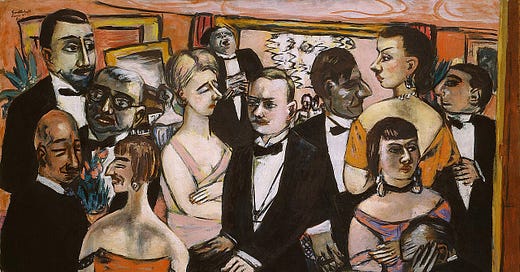



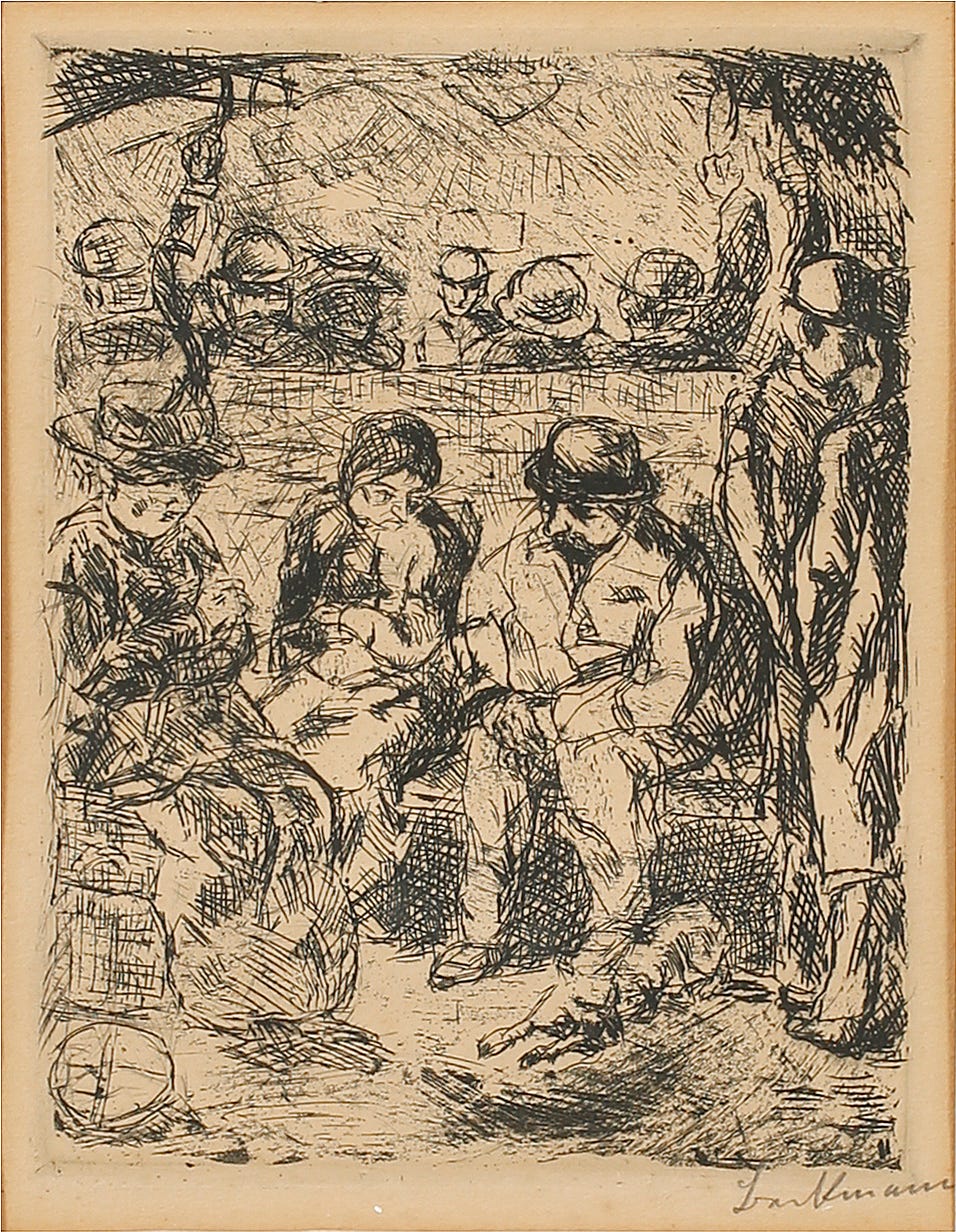
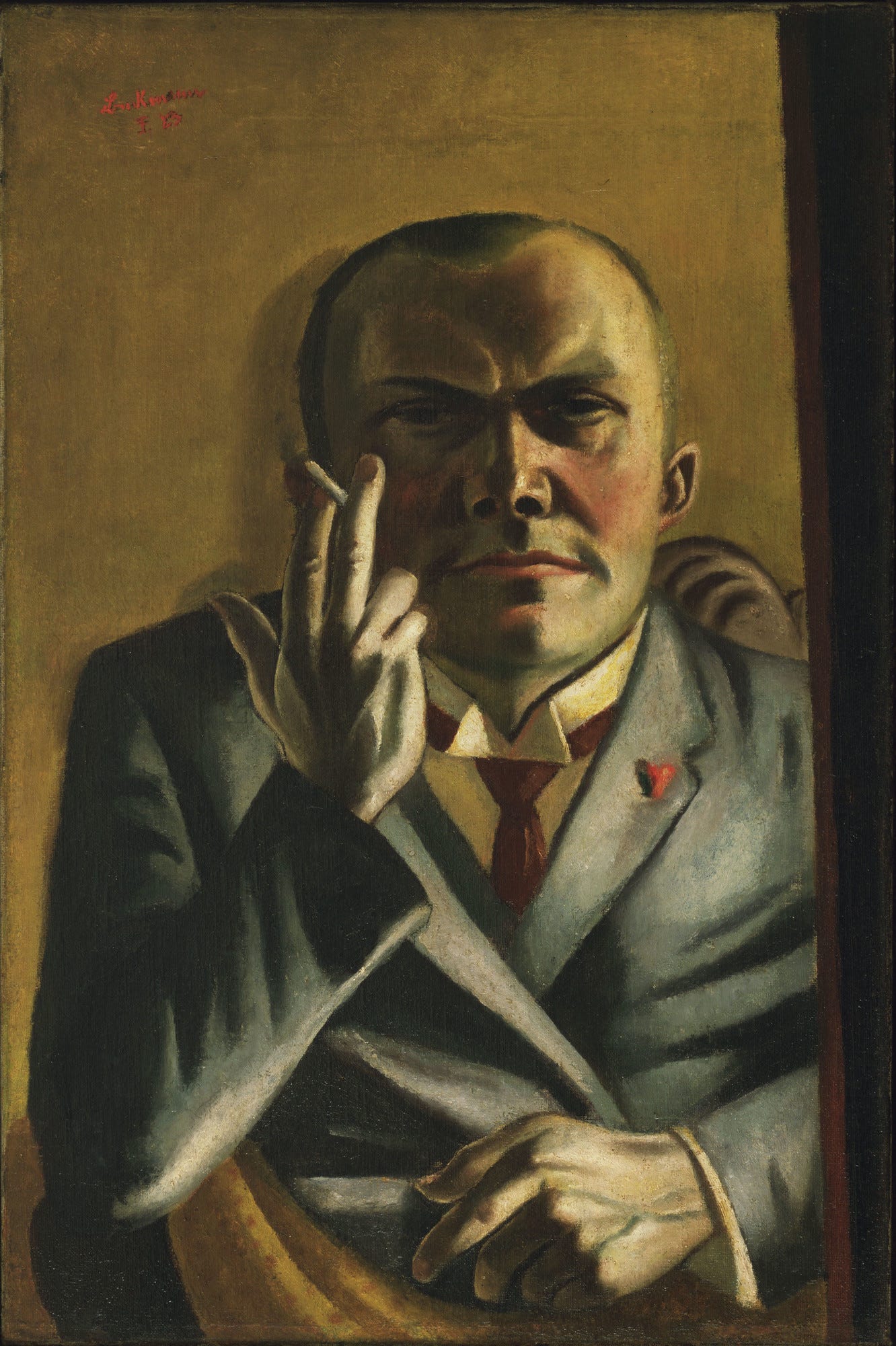
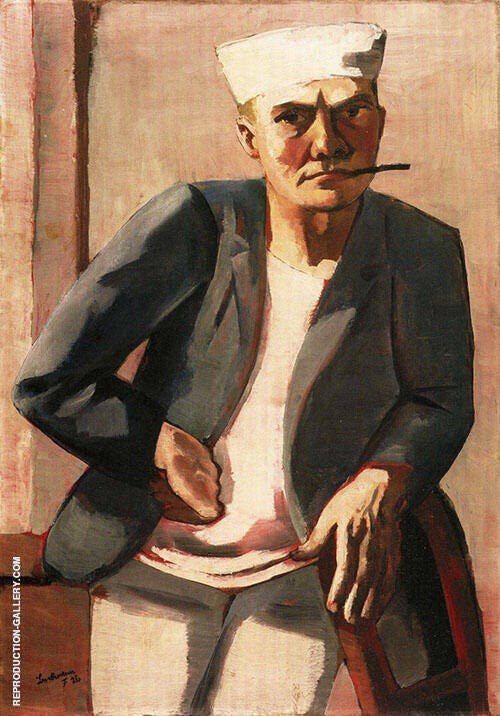
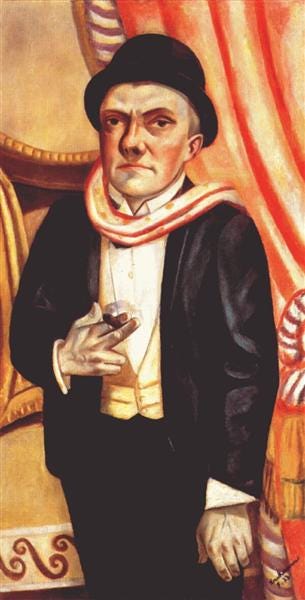
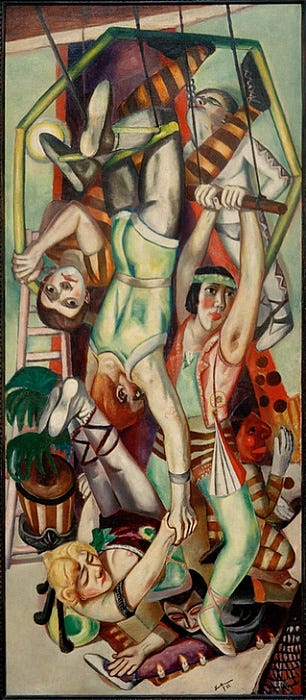
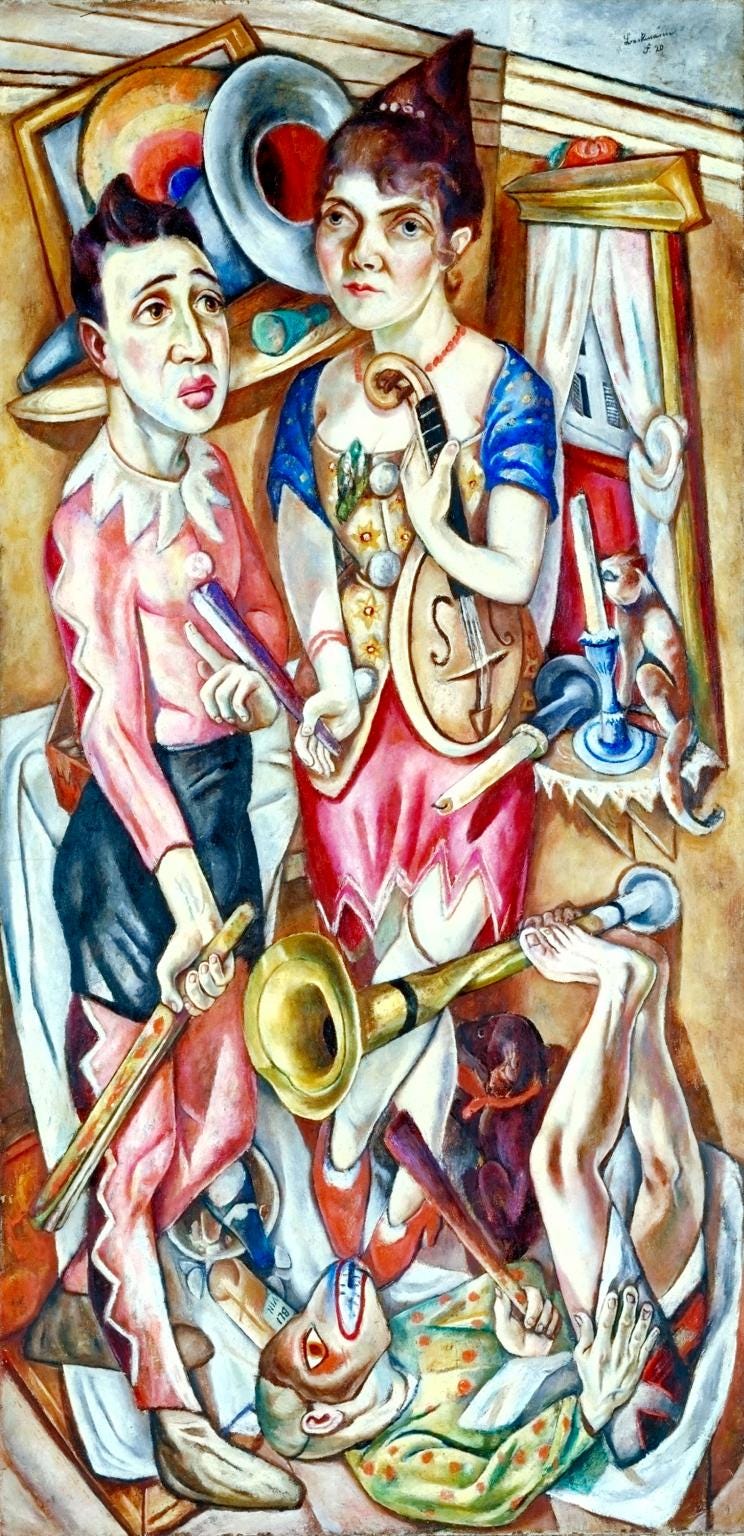
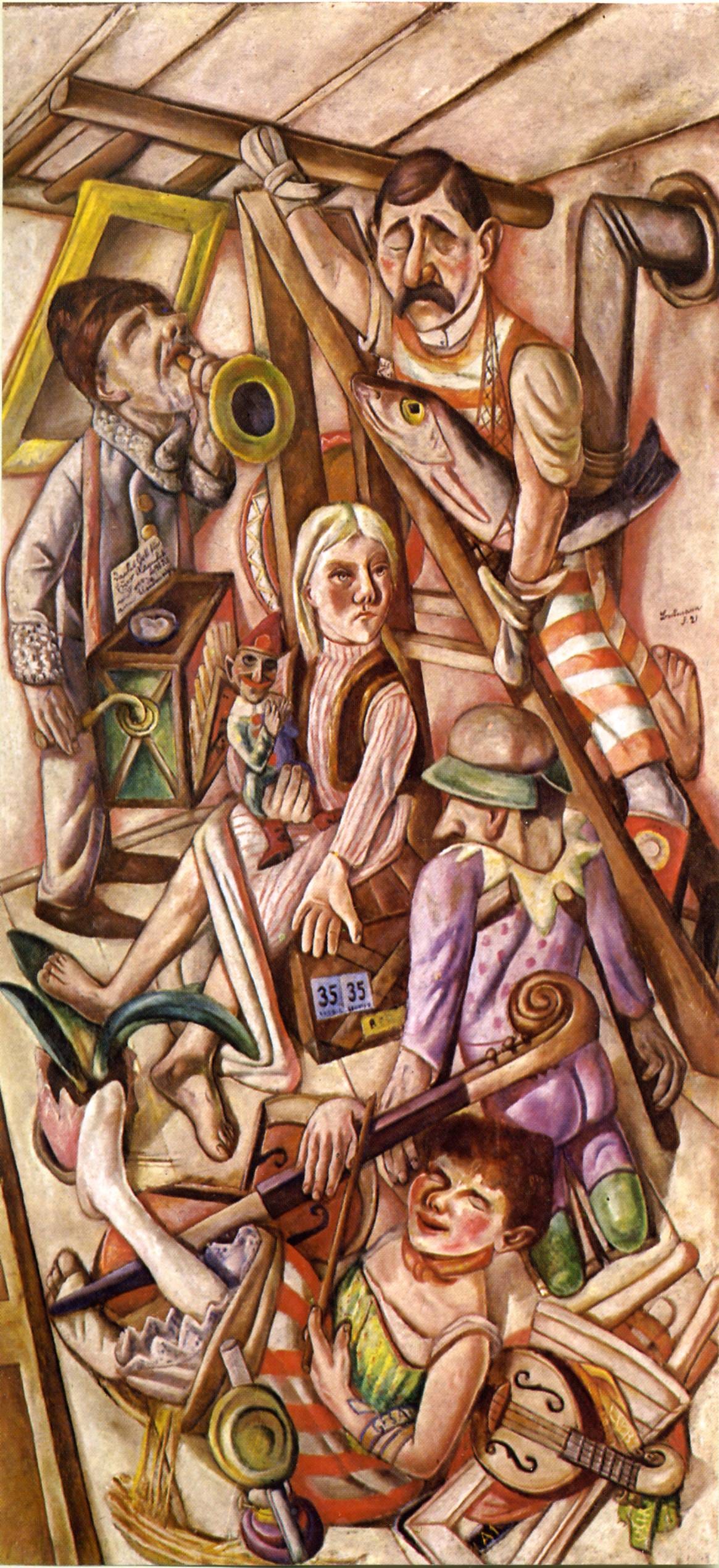
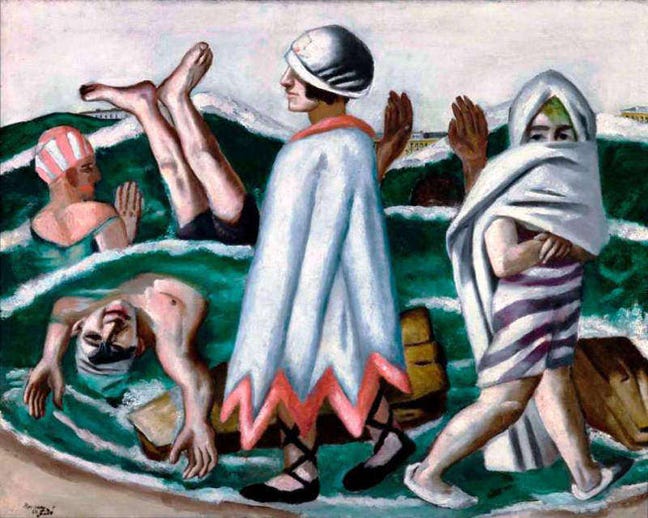
I wonder what our "carnivals" are today? The ones I know (Rio, Québec city), I don't think they point to hopelessness. I feel they point rather towards "fait divers", ordinary entertainment, cultural nostalgia, mundane tourism. I guess nightclubs are our carnivals, maybe an EDM festival, any festival. Any leisure activity that serves as a balm, that serves as a crutch for an unsatisfying life, is a carnival, participates in the carnival, in a way. Carnival's the kind of thing you'd rather not have in an ideal world, but in this world, that's what we have.
Carnival has disembodied, too. Has moved online. It's all sense of joy, or at least appearance of sense of joy. Happy to have discovered Beckmann.
Fascinating.